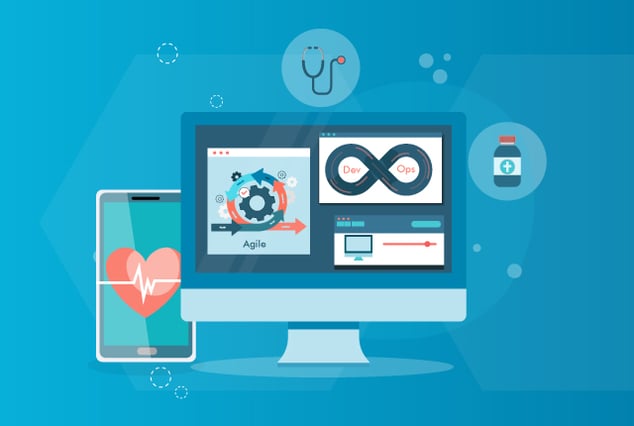
The Agile testing environment creates strength in numbers. It aligns the talents and vision of your entire team to ensure the promise of your product becomes a market reality.
Every stakeholder in your software development life cycle is involved from beginning to end. You can maintain an end-user focus through the development and analysis of daily builds using a cyclical, continuous integration model. The core of the Agile environment is the relationship between developers and testers. Each plays a vital role in what has traditionally been the other's exclusive domain. Developers participate in automated unit testing, for example, while testers are involved right from the initial sprint planning.
To balance this partnership and maximize testing in Agile, you need a QA team that is as talented and experienced as your developers are. Often, that means expanding the internal team to include outsourced QA experts.
To master QA testing in Agile, you need to find a master QA team.
Testing in Agile Creates Effective Connections
The Agile model has come to replace legacy development strategies by concentrating the efforts of the entire team toward a series of short, incremental stages. This series of sprints takes each element through the process of design, coding and testing in a repeated flow of iterations that is built to accommodate change.
By incorporating continuous integration testing into each sprint, defects are discovered sooner; functionality improvements are more easily implemented; and business, development and testing experts can provide insight every step of the way.
Whereas once testers and developers worked in isolation, now-a-days testing in Agile promotes collaboration and greater flow and efficiency overall. Each iteration is assessed, and it progresses only once it satisfies all stakeholders. Meanwhile, a continual battery of regression testing and other safeguards ensure that the core functionality remains intact throughout development.
This new emphasis on developer and tester collaboration makes greater demands on the QA team. As an integrated member of the project, QA testers need to evolve beyond catching bugs to provide valued guidance on planning, enhancing feature development, tool selection, framework design and more.
Agile QA testers must become project partners.
The Role of QA Testing in Agile
The Agile QA team needs a place at the planning table. The testing team has a role to play in scheduling and anticipating test requirements as the regular sprint of development analysis shrinks the time usually given over to testing—from months down to weeks or days.
They also have a key role to play in identifying the type of testing required. This will include the use of manual testing. While slower and more labor intensive than automation, manual testing offers qualitative advantages leveraged from the insight of human engineers. It also creates opportunities for business, development and IT stakeholders to take an active hand in testing.
The QA team also bears responsibility for the development of adequate tracking, reporting and feedback systems that keep the entire team up to date on system progress and the discovery of major faults.
Finally, the QA team should take the lead in designing not only test cases but also the very automation test framework underlying the entire testing process. A well-designed framework boosts productivity, improves release speed and can significantly reduce testing costs. With such a large and varied list of responsibilities, it is easy to see why many software developers choose to outsource their QA needs to a dedicated professional.
How To Build a Good QA Plan For Your Agile Environment?
While QA helps to validate every aspect of setting up an agile environment, the process of quality assurance should not delay or obstruct the speed of development. So, what does a good QA plan look like?
-
Keep Quality Analysis Result Oriented
Since agile development works with smaller targets and shorter sprints, it is imperative for the QA plan to fit into a faster and more dynamic agile environment. With a result-oriented approach, testers and developers can work together to deliver specific results, making cross-functional collaboration more effective.
-
Ensure That Testing Is an Ongoing Process
At any cost, testing should not be put on the back burner till the end of the cycle. It is important to test throughout the sprint, where the QA workload can get effectively distributed, and teams can identify issues during the development process and promptly take care of them, rather than wait till the very end. With the proper integration of testing and development, both teams resolve issues at speed while ensuring quality.
-
Arrange for Demos From Developers
Regular demonstrations of application features encourages greater involvement of the QA teams, and helps to clarify doubts. Moreover, collaboration between these two teams greatly helps to reduce the feedback loop, resulting in faster turnaround.
-
Maintain Transparent Objectives
Maintaining transparent goals and clear understanding of processes helps to streamline the development process, and improve collaboration between teams. With proper collaboration and teamwork, teams will be able to meet their deadlines.
Why It Pays to Outsource Agile QA
The Agile approach to software development places a strong emphasis on QA, so it is prudent not to leave product testing to anyone who is less than an expert. The days of pressing developers into service as makeshift testers are over. In fact, the time and cost efficiencies that an external QA team can introduce make it beneficial to your ROI to seek out an expert resource.
Here are five advantages of outsourcing your QA to a dedicated team:
-
Ramp up Production Quickly
A QA expert has the experience to rapidly onboard with a project team, allowing enterprises to scale up production around key product release points without the resource burden of carrying a full-time QA team internally.
-
Domain Expertise
Dedicated QA partners can provide engineers that specialize in your domain. They are experts in the latest trends and technologies shaping your industry, and they are qualified to meet the agency and audit standards of rigorous medical, financial and security fields.
-
Framework Agnostics
External QA experts have experience and facilities to design an automated testing framework that delivers in tandem with your team’s unique product, environment and talents. Every application is different, so every QA approach should be as well.
-
Gain Resource Advantages by Going Offshore
Engaging an offshore QA team allows domestic developers to leverage resource differences between the U.S. and external markets such as India. The difference in spending can reduce the overall QA costs by half.
-
Time as an Offshore Asset
Offshore teams can also leverage the time zone differences to produce work around the clock. QA experts can conduct testing overnight and present domestic developers with updates and reports in the morning. Additionally, nearshore options that share a common clock can better leverage communication and technology links.
To maximize the developer-tester collaboration that makes testing in Agile so rewarding, you have to be willing to seek out a QA authority that can match the expertise and talents of your developers. Agile requires partnership. Partnership requires equality of responsibilities and capabilities.
To master QA testing in an Agile environment, you must find a QA partner that can resonate with your entire development team to achieve milestones in a defined time-frame.
QASource’s engineers are experts in Agile methodology with a proven track record of producing results for cutting-edge software developers. Get a free quote, or call +1.925.271.5555 today and start modernizing your development approach.


